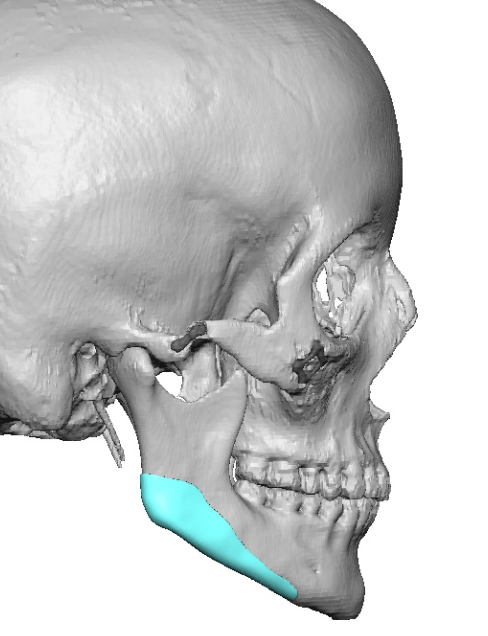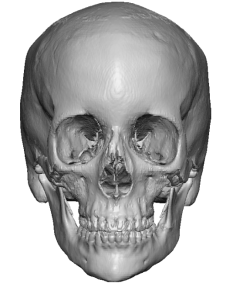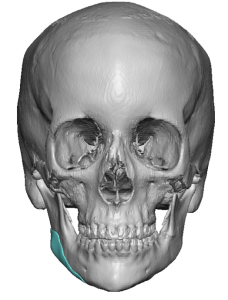Background: V line surgery is a well known bony jaw reduction/reshaping procedure. In its most traditional form it is an amputation of the inferior border of the jaw from the jaw angles up to the side of the chin. The greatest amount of bone is vertically removed from the jaw angles and becomes less as it extends forward to stay below the level of the inferior alveolar nerve in the bone.
Performed intraorally the symmetry of the jawline reduction is based on the similarity of the line of the bone cut on each side. It is not easy for them to perfectly match and some asymmetries in the bone removal on each side is not rare. They can occur in two basic asymmetry types, too much removal or not enough. The asymmetry is determined by which side of the jaw the patient sees as the good side. Then how does the opposite side compare?
Most commonly the judged asymmetric side is from over resection. (a higher line of bone cut) This results in a long line of bone asymmetry that is greatest at the posterior border of the jaw angle and becomes increasingly less as it comes forward into the body region of the jaw. Correction of these uniquely shaped jawline deficiencies require 3D CT scan assessment and custom implant designing.
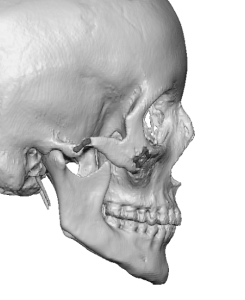

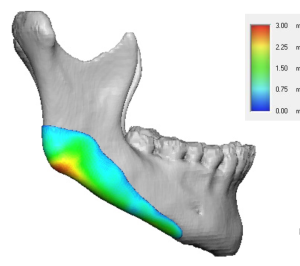
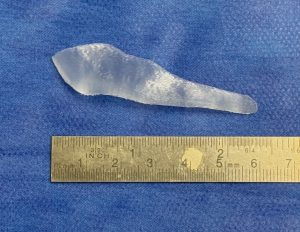
I have seen many V line surgery asymmetries and, admittedly, this is one of the most modest compared to many others. But all that matters is what the patient sees and is important to them. In the smallest of bony asymmetries precision is utterly critical as over correction can easily occur by trying to ‘eyeball’ the correction.
Key Points:
1) V line surgery is prone to bony jawline asymmetries due to differential lines of bone cuts.
2) A 3D CT scan is the most accurate method to determine the exact differences between the sides in jawline asymmetries.
3) A custom jawline implant design is the definitive method to create implant correction of bony jaw asymmetries.
Dr. Barry Eppley
World-Renowned Plastic Surgeon

